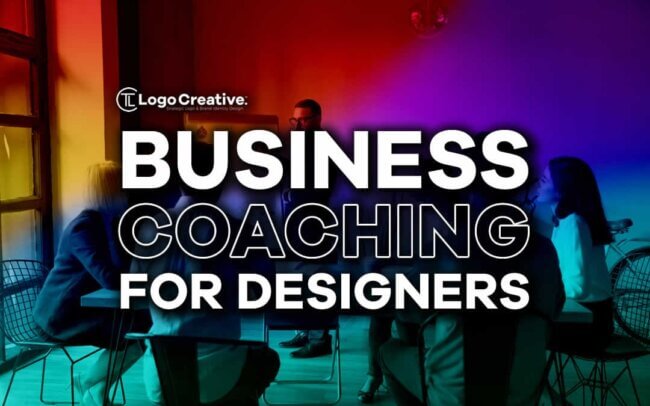Many designers struggle to bridge the gap between their artistic talent and entrepreneurial skills. The truth is, designing is just one part of the equation. You also need a solid understanding of the business side of things. In this article we look at Business Coaching for Designers.
This is where business coaching for designers comes in – a powerful guide to help you build the business acumen and confidence you need to succeed in the competitive design industry.
This article will delve into the skills, techniques, and tools business coaches can provide to help you grow and flourish as a designer.
Let’s dive in.
Table of Contents
Benefits of Business Coaching for Designers

As a designer, you might know everything in your area of expertise, but what about your business skills? That’s where business coaching comes in. Not only can it help you achieve faster growth in your career and business, but it can also improve your focus and increase your confidence.
Let’s peel back the layers and explore how a business coach can help you improve.
Accelerate Growth
Business coaching can help accelerate your growth. As a creator, you might have the talent, but you may not know how to market your skills effectively or manage your finances.
A coach can guide these areas and help you avoid common mistakes, ultimately leading to faster growth in your career or business.
Improve Focus
A business coach can help you improve your focus. As a creative, you may struggle to stay on track and prioritise your goals. A coach can help you identify the most important and develop a plan to achieve those goals.
They can also help you overcome distractions and avoid getting sidetracked. You can achieve your goals more efficiently and effectively with a clear plan and focus.
Increase Confidence
It’s common in the designer’s world that you may doubt your abilities or struggle with imposter syndrome. Like life coaching, business coaching focuses on helping individuals achieve their goals and overcome obstacles.
Business coaches work with designers to identify their strengths and weaknesses and make the most of them to succeed.
One of the key benefits of working with a business coach is their ability to ask insightful and thought-provoking questions. Just as life coaches use powerful coaching questions to help clients gain clarity and insight, business coaches can challenge designers to think creatively and develop effective solutions to complex problems.
Business Coaches’ Key Focus Areas for Designers

In today’s fast-paced and ever-evolving world, staying on top of the latest trends and developments is essential for success in any field. This is especially true in the design industry, where creativity and innovation are highly prized.
Furthermore, as a designer grows their business and begins to manage a team, staying current and adapting to the changing landscape becomes even more critical. This is particularly pertinent with the increasing prevalence of hybrid teams and the importance of effective leadership and management.
Whether you’re just starting in the design industry or a seasoned professional, a business coach can be invaluable in keeping up with the latest leadership trends and staying ahead of the curve.
Let’s analyze the specific areas in which business coaches can enhance the proficiency of designers.
#1 – Marketing and Branding
You may have all the creativity in the world, but your work may never see the light of day without the proper marketing and branding skills. That’s where business coaching comes in – it teaches you how to market yourself effectively and build a strong brand to showcase your work.
Build a Compelling Presence on Social Media
One thing that business coaches pay attention to is the use of social media marketing. With over 4.26 billion active social media users worldwide, it’s a powerful tool to promote your work and connect with potential clients.
An effective social media strategy includes regularly posting high-quality content, engaging with followers, and using relevant hashtags to increase visibility.
For example, a graphic designer might share their latest projects, behind-the-scenes glimpses of their creative process, and tips for other designers. By sharing valuable content and engaging with their audience, the designer can build a following and attract new clients.
Develop a Professional Online Portfolio
A business coach can assist designers in creating and optimizing their website and online portfolio to effectively showcase their skills and attract potential clients. They can guide creating a user-friendly website with a visually appealing design, highlighting the designer’s best work, and optimizing it for search engines to increase visibility.
A coach can also advise on how to create a compelling portfolio showcasing various projects and demonstrating the designer’s versatility and expertise.
Additionally, they can offer insights on the importance of including client testimonials, contact information, and calls to action to encourage potential clients to take action.
With the help of a business coach, designers can establish a robust online presence and effectively market their services to the world.
Build Relationships with Creative Networking
Networking is vital for success in the design industry. Business coaching can guide you on networking creatively, attending events, and connecting with other professionals in your field. In addition, you’ll get tips on presenting yourself professionally, making a lasting impression, and building valuable relationships.
For example, a freelance web designer might attend a local networking event for entrepreneurs and connect with business owners looking for web design services.
By building relationships with potential clients, designers can generate leads and grow their businesses.
Master Email Campaigns
Email marketing is a powerful tool to help designers build brand awareness, connect with potential clients, and drive sales. However, developing an effective email marketing strategy on your own can be challenging. This is where business coaches can help. Here’s how designers can leverage email marketing:
- Crafting Engaging Email Campaigns: A business coach can help you develop engaging email campaigns that capture your audience’s attention and lead to conversions. For instance, a coach can teach you how to write compelling subject lines, craft relevant content, and use visuals to make your emails more appealing.
- Building a Mailing List: Your email campaigns will only be effective if you have a list of subscribers interested in your work. A business coach can help you develop strategies to grow your mailing list, such as offering sign-up incentives or collaborating with other designers to promote each other’s work.
- Segmenting Your Audience: Not all subscribers have the same interests or needs. A business coach can help you segment your audience based on location, preferences, or behaviour. This way, you can send targeted messages more likely to resonate with each group.
- Asking for Referrals and Reviews: A satisfied client can be an excellent source of referrals and positive reviews. A business coach can help you develop strategies to ask for client referrals and reviews. For instance, you can send follow-up emails after a project is completed, thanking clients for their business and asking them to recommend you to their network.
#2 – Develop Your Business Strategy

Design is not just about creativity and aesthetics. It’s also about building a successful career or business. And it doesn’t matter whether you are a freelancer or business owner. Business strategy is a critical skill that every designer needs to develop to achieve long-term success.
A business coach can help you learn how to develop a comprehensive plan for your design career or business, tips on managing your finances, price your services, and set goals that will help you achieve your vision.
Also, you can learn techniques and tips on how to get remote job opportunities, which are a practical and effective way to increase your income as a designer.
Accurately Set Your Long-Term Goals
One of the first steps in developing a long-term plan for your design career or business is to define your vision and goals. What do you want to achieve? Where do you see yourself or your business in five or ten years? Business coaching can help you clarify your vision and set achievable goals within your timeframe.
For example, a business coach can help you in setting up SMART goals that are specific, measurable, achievable, relevant, and time-bound. Setting these goals lets you stay focused on what is important and track your progress towards achieving your vision.
Manage Your Finances and Price Your Services
Another critical aspect of business strategy is managing your finances. An expert coach can advise you on creating your budget, tracking your expenses, and forecasting your income. By understanding your financial situation, you can make informed decisions about pricing your services, investing in new equipment or software, or hiring additional staff.
Pricing your services is another crucial skill that designers need to master. A business coach can offer you effective pricing strategies based on your skills, experience, and market demand.
For instance, a web designer might charge by the hour, by the project, or on a retainer basis. With a bit of help, you can determine the best pricing strategy for your services and ensure that you are getting paid what you are worth.
Automate Your Operations Management
Managing a smooth workflow of your tasks can be just as important as creating beautiful designs. Here are some tips where business coaches can point you in order to set up efficient systems and processes that streamline your workflow and reduce stress.
Project management tools like Asana or Trello can help you keep track of deadlines, assignments, and progress updates. These tools are excellent for collaboration with your team and clients, ensuring everyone is on the same page and meeting deadlines.
Automation software like Zapier or Unito can help you cut the time spent doing repetitive tasks. Using this software, you can automatically transfer data from one application to another, freeing up your time and reducing the risk of errors.
For example, you can connect Asana, Gmail, and Slack with a workflow tool to automate project management and client communication. You can set up a rule that sends a message to a designated Slack channel when a task is added to an Asana project and sends an email to the client when a task is completed. This saves you time and ensures everyone is updated on the project’s progress.
#3 – Communication with Clients
To be able to communicate successfully with clients is of immense importance to designers. And that’s not always easy to master on your own. Here’s where a business coach expert can get things in motion.
A business coach can guide you on communicating clearly, listening actively, and providing feedback effectively. For example, the business coach might use role-playing exercises to practice communication skills or facilitate group brainstorming sessions to encourage collaboration.
Furthermore, business coaches can offer a variety of tips and strategies to improve your communication with client’s skills. Here are some key tips to keep in mind:
- Regular communication is vital: Regularly communicate with your clients throughout the project, keeping them informed about the progress and any changes. This will help build trust and avoid misunderstandings.
- Listen actively: Take the time to listen actively to your client’s needs, preferences, and concerns. This will help you better understand their expectations and deliver a result that meets their requirements.
- Set clear expectations: From the outset, be clear about what you can deliver and what your clients can expect. This will help manage their expectations and prevent any surprises or disappointments.
- Be responsive: Respond to your clients’ messages and requests in a timely manner. This shows that you value their time and are committed to delivering quality work.
- Go above and beyond: Surprise your clients by going the extra mile and providing additional value wherever possible. This will help build a loyal customer base and increase referrals.
Unlock Your Potential with a Business Coach

Business coaching for designers is an essential investment for anyone looking to succeed in the competitive design industry.
Most designers are struggling with their marketing skills, developing an effective business strategy, and losing clients due to poor communication and collaboration with clients.
Business coaches are experts in these fields and can provide professional guidance, ultimately leading to a more prosperous and fulfilling career or business.
If you’re a designer looking to bridge the gap between your artistic talent and entrepreneurial skills, consider seeking out a business coach to help you unlock your full potential.
Join The Logo Community
We hope this article about Business Coaching for Designers has been helpful. If you would like more personal tips, advice, insights, and access to our community threads and other goodies, join me in our community.
You can comment directly on the posts and have a discussion with Andrew, the Founder of The Logo Creative.
*TIP – We recommend Skillshare to learn online. There are tons of classes for everything including graphic design, web design, marketing, branding and business-related courses. Get a free trial with our link and you won’t regret it Trust us!
 Author Bio
Author Bio
Scarlett Finley is a results-driven affiliate marketing consultant with a proven track record driving business growth. She has a passion for helping businesses identify the right tools and strategies to optimize their growth potential.


